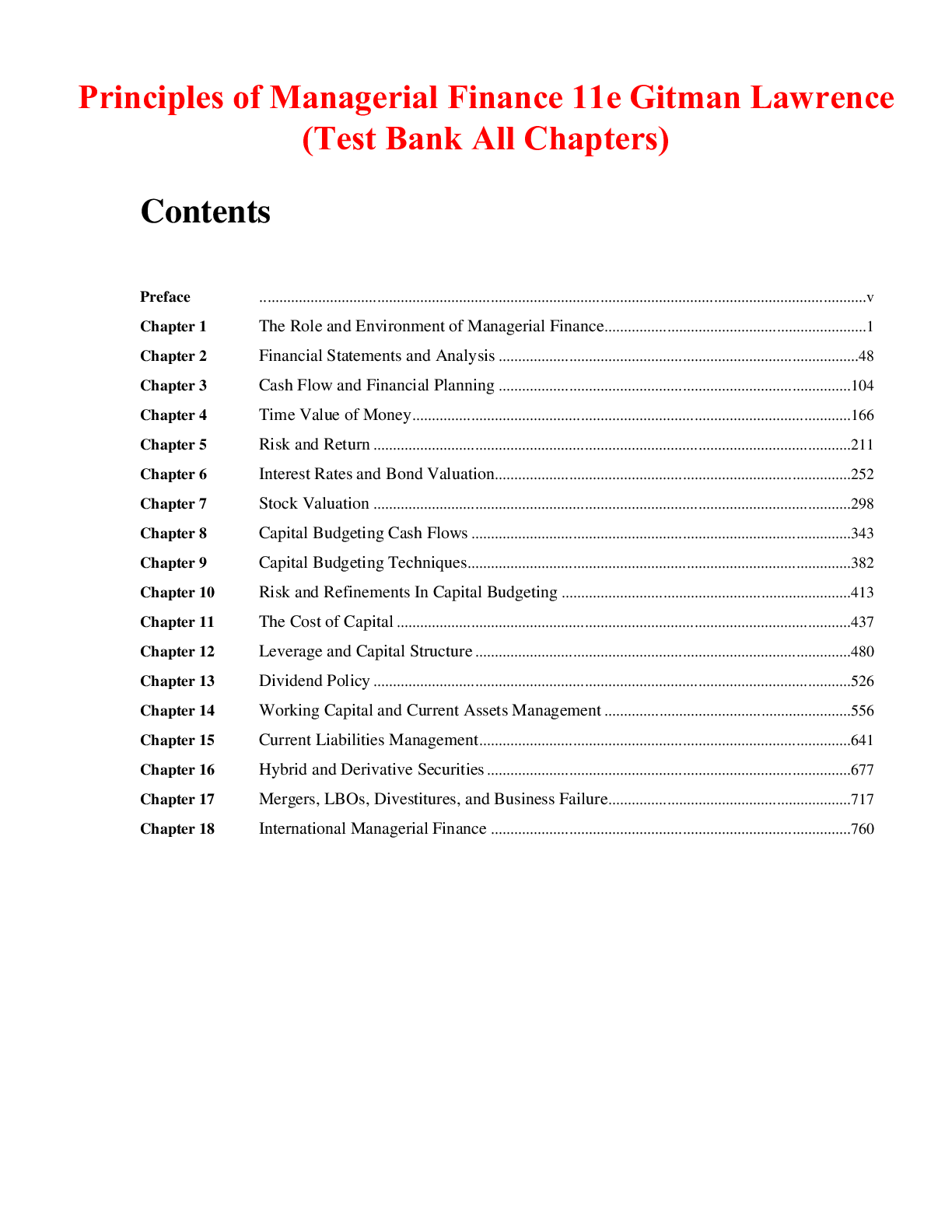Organizational Behavior > TEST BANK > Organizational Behaviour Understanding and Managing Life at Work, 11th Edition by Johns Test Bank (All)
Organizational Behaviour Understanding and Managing Life at Work, 11th Edition by Johns Test Bank
Document Content and Description Below
Test Bank for Organizational Behaviour Understanding and Managing Life at Work, 11th Edition, 11e by Gary Johns,Alan M. Saks TEST BANK ISBN-13: 9780137596805 FULL CHAPTERS INCLUDED Part 1 An In... troduction Chapter 1 Organizational Behaviour and Management Learning Objectives What Are Organizations? Social Inventions Goal Accomplishment Group Effort What Is Organizational Behaviour? Why Study Organizational Behaviour? Organizational Behaviour Is Interesting Organizational Behaviour Is Important Organizational Behaviour Makes a Difference How Much Do You Know About Organizational Behaviour? Goals of Organizational Behaviour Predicting Organizational Behaviour Explaining Organizational Behaviour Managing Organizational Behaviour Early Prescriptions Concerning Management The Classical View and Bureaucracy The Human Relations Movement and a Critique of Bureaucracy Contemporary Management—The Contingency Approach What Do Managers Do? Managerial Roles Interpersonal Roles Informational Roles Decisional Roles Managerial Activities Managerial Agendas Agenda Setting Networking Agenda Implementation Managerial Minds International Managers Some Contemporary Management Concerns Diversity—Local and Global Employee Health and Well-Being Workplace Spirituality Positive Organizational Behaviour Talent Management and Employee Engagement Talent Management Employee Engagement Corporate Social Responsibility Summary and Road Map Learning Objectives Checklist Discussion Questions On-the-Job Challenge Question Pay to Work or Pay to Quit? Experiential Exercise Good Job, Bad Job Experiential Exercise OB in the News Experiential Exercise How Engaged Are You? Scoring and Interpretation Questions Experiential Exercise Corporate Social Responsibility Scoring and Interpretation Questions Brazil and the Labour Market Argamassa and Leandro Giuntini Eduardo Santiago Argamassa, Leandro Giuntini, and Eduardo Santiago Fix It—Again? Questions Company Background Ken Private Limited Dogma International Strategic Agreement: Digitizing 150 Years of History The Preparation: Technology and Content Strategy Distant Teams, Different Backgrounds The Widening Gap Hitting A Roadblock The Mystery Deepens The Other Side The Deadline Approaches The Angry Client The Missing Link Questions Part 2 Individual Behaviour Chapter 2 Personality and Learning Learning Objectives What Is Personality? Personality and Organizational Behaviour The Five-Factor Model of Personality Research Evidence Locus of Control Self-Monitoring Self-Esteem Advances in Personality and Organizational Behaviour Positive and Negative Affectivity Proactive Personality General Self-Efficacy Core Self-Evaluations What Is Learning? What Do Employees Learn? Operant Learning Theory Increasing the Probability of Behaviour Positive Reinforcement Negative Reinforcement Organizational Errors Involving Reinforcement Confusing Rewards with Reinforcers Neglecting Diversity in Preferences for Reinforcers Neglecting Important Sources of Reinforcement Reinforcement Strategies Reducing the Probability of Behaviour Extinction Punishment Using Punishment Effectively Social Cognitive Theory Observational Learning Self-Efficacy Beliefs Self-Regulation Organizational Learning Practices Organizational Behaviour Modification Employee Recognition Programs Training and Development Programs Learning Objectives Checklist Discussion Questions Integrative Discussion Questions On-the-Job Challenge Question 18 000 Collisions Experiential Exercise Proactive Personality Scale Scoring and Interpretation General Self-Efficacy Scoring and Interpretation The Core Self-Evaluations Scale (CSES) Scoring and Interpretation Background The Second Attempt in 2005 Questions Chapter 3 Perception, Attribution, and Diversity Learning Objectives What Is Perception? Components of Perception The Perceiver The Target The Situation Social Identity Theory A Model of the Perceptual Process Basic Biases in Person Perception Primacy and Recency Effects Reliance on Central Traits Implicit Personality Theories Projection Stereotyping Attribution: Perceiving Causes and Motives Consistency Cues Consensus Cues Distinctiveness Cues Attribution in Action Biases in Attribution Fundamental Attribution Error Actor–Observer Effect Self-Serving Bias Person Perception and Workforce Diversity The Changing Workplace Valuing Diversity Stereotypes and Workforce Diversity Racial, Ethnic, and Religious Stereotypes Gender Stereotypes Age Stereotypes LGBTQ Stereotypes Managing Workforce Diversity Perceptions of Trust Perceived Organizational Support Person Perception in Human Resources Management Perceptions of Recruitment and Selection Perceptions in the Employment Interview Perceptions and the Performance Appraisal Objective and Subjective Measures Rater Errors Learning Objectives Checklist Discussion Questions Integrative Discussion Questions On-the-Job Challenge Question The “Name-Blind” Recruitment Pilot Project Experiential Exercise Workplace Age Discrimination Scale (WADS) Scoring and Interpretation TD Bank Financial Group3 Corporate Responsibility and Diversity at TD7 LGBTA Initiatives at TD Core Employee Programs and Sponsorships Customer Strategies Competition on Being a Top Diversity Employer Initial Challenges Expanding the Strategy Advancing LGBTA Initiatives Questions Chapter 4 Values, Attitudes, and Work Behaviour Learning Objectives What Are Values? Generational Differences in Values Cultural Differences in Values Work Centrality Hofstede’s Study Implications of Cultural Variation Exporting OB Theories Importing OB Theories Appreciating Global Customers Developing Global Employees What Are Attitudes? What Is Job Satisfaction? What Determines Job Satisfaction? Discrepancy Fairness Distributive Fairness Procedural Fairness Interactional Fairness Disposition Mood and Emotion Some Key Contributors to Job Satisfaction Mentally Challenging Work Meaningful Work Adequate Compensation Career Opportunities People Consequences of Job Satisfaction Absence from Work Turnover Performance Organizational Citizenship Behaviour Customer Satisfaction and Profit What Is Organizational Commitment? Key Contributors to Organizational Commitment Consequences of Organizational Commitment Changes in the Workplace and Employee Commitment Learning Objectives Checklist Discussion Questions Integrative Discussion Questions On-the-Job Challenge Question Mr. Winston Experiential Exercise Attitudes Towards Absenteeism from Work Scoring and Interpretation Chapter 5 Theories of Work Motivation Learning Objectives Why Study Motivation? What Is Motivation? Basic Characteristics of Motivation Effort Persistence Direction Goals Extrinsic and Intrinsic Motivation Motivation and Performance General Cognitive Ability Emotional Intelligence The Motivation–Performance Relationship Need Theories of Work Motivation Maslow’s Hierarchy of Needs Alderfer’s ERG Theory McClelland’s Theory of Needs Research Support for Need Theories Managerial Implications of Need Theories Appreciate Diversity Appreciate Intrinsic Motivation Self-Determination Theory Research Support for and Managerial Implications of Self-Determination Theory Process Theories of Work Motivation Expectancy Theory Research Support for Expectancy Theory Managerial Implications of Expectancy Theory Boost Expectancies Clarify Reward Contingencies Appreciate Diverse Needs Equity Theory Gender and Equity Research Support for Equity Theory Managerial Implications of Equity Theory Goal Setting Theory What Kinds of Goals Are Motivational? Goal Specificity Goal Challenge Goal Commitment Goal Feedback Enhancing Goal Commitment Participation Rewards Management Support Goal Orientation Goal Proximity Research Support for Goal Setting Theory Managerial Implications of Goal Setting Theory Do Motivation Theories Translate Across Cultures? Putting It All Together: Integrating Theories of Work Motivation Learning Objectives Checklist Discussion Questions Integrative Discussion Questions On-the-Job Challenge Question Your New Salary Experiential Exercise Work-Related Basic Need Satisfaction Scale (W-BNS) Scoring and Interpretation Introduction Kyle Evans Company/Store Description Regional Manager Position Common Store Operations and Standards Employee Expectations/Duties Goals and Compensation Typical Employees Sink or Swim: Ruffian Kelowna Evans’s First Meeting The Kelowna Store Looking into the Problem Current Staff Phone Conversation With Nathan Edwards Kyle Evans Visits the Store Store Manager: What to Do Conclusion Questions Chapter 6 Motivation in Practice Learning Objectives Money as a Motivator Linking Pay to Performance on Production Jobs Potential Problems with Wage Incentives Lowered Quality Differential Opportunity Reduced Cooperation Incompatible Job Design Restriction of Productivity Linking Pay to Performance on White-Collar Jobs Potential Problems with Merit Pay Plans Low Discrimination Small Increases Pay Secrecy Using Pay to Motivate Teamwork Profit Sharing Employee Stock Ownership Plans (ESOPs) Gainsharing Skill-Based Pay Job Design as a Motivator Traditional Views of Job Design Job Scope and Motivation The Job Characteristics Model Core Job Characteristics Critical Psychological States Outcomes Moderators Research Evidence Job Enrichment Potential Problems with Job Enrichment Poor Diagnosis Lack of Desire or Skill Demand for Rewards Union Resistance Supervisory Resistance Work Design Relational Job Design Job Crafting Management by Objectives Flexible Work Arrangements as Motivators for a Diverse Workforce Flex-Time Research Evidence Compressed Workweek Research Evidence Job and Work Sharing Research Evidence Telecommuting Research Evidence Motivational Practices in Perspective Learning Objectives Checklist Discussion Questions Integrative Discussion Questions On-the-Job Challenge Question The Most Meaningful Work Experiential Exercise Job Crafting Scoring and Interpretation Questions Staffing Procedure Productivity and Quality Issues Rules and Regulations Questions Part 3 Social Behaviour and Organizational Processes Chapter 7 Groups and Teamwork Learning Objectives What Is a Group? Group Development Typical Stages of Group Development Forming Storming Norming Performing Adjourning Punctuated Equilibrium Phase 1 Midpoint Transition Phase 2 Group Structure and Its Consequences Group Size Size and Satisfaction Size and Performance Diversity of Group Membership Group Norms Norm Development Some Typical Norms Roles Role Ambiguity Role Conflict Status Formal Status Systems Informal Status Systems Consequences of Status Differences Reducing Status Barriers Group Cohesiveness Factors Influencing Cohesiveness Threat and Competition Success Member Diversity Group Size Toughness of Initiation Consequences of Cohesiveness More Participation in Group Activities More Conformity More Success Social Loafing What Is a Team? Designing Effective Work Teams Self-Managed Work Teams Tasks for Self-Managed Teams Composition of Self-Managed Teams Supporting Self-Managed Teams Cross-Functional Teams Principles for Effectiveness Virtual Teams Advantages of Virtual Teams Challenges of Virtual Teams Lessons Concerning Virtual Teams A Word of Caution: Teams as a Panacea Learning Objectives Checklist Discussion Questions Integrative Discussion Questions On-the-Job Challenge Question Hire Teams, Not Individuals? Experiential Exercise NASA The Problem Discussion NASA Tally Sheet Introduction Metropole Services Anita Jairam Joining Metropole Questions Chapter 8 Social Influence, Socialization, and Organizational Culture Learning Objectives Social Influence in Organizations Information Dependence and Effect Dependence The Social Influence Process and Conformity Organizational Socialization Stages of Socialization Anticipatory Socialization Encounter Role Management Unrealistic Expectations and the Psychological Contract Unrealistic Expectations Psychological Contract Methods of Organizational Socialization Realistic Job Previews Research Evidence Employee Orientation Programs Research Evidence Socialization Tactics Research Evidence Mentoring Career Functions of Mentoring Psychosocial Functions of Mentoring Formal Mentoring Programs Developmental Networks Women and Mentoring Race, Ethnicity, and Mentoring Research Evidence Newcomer Proactive Socialization Behaviours Research Evidence Organizational Culture What Is Organizational Culture? The “Strong Culture” Concept Assets of Strong Cultures Coordination Conflict Resolution Financial Success Liabilities of Strong Cultures Resistance to Change Pathology Contributors to the Culture The Founder’s Role Socialization Diagnosing a Culture Symbols Rituals Stories Learning Objectives Checklist Discussion Questions Integrative Discussion Questions On-the-Job Challenge Question Culture or Biology? Experiential Exercise Proactive Socialization Scoring and Interpretation Once Upon a Time: Disney’s Heritage and Traditions From Film to Theme Park Inside The Magic Kingdoms Becoming Part of The Walt Disney Company (WDC)11 Traditions I class Local Traditions The Attachment Outside the Magic Kingdoms What Lives On? Questions Chapter 9 Leadership Learning Objectives What Is Leadership? Are Leaders Born or Made? The Trait Theory of Leadership Research on Leadership Traits Limitations of the Trait Approach The Behaviour of Leaders Consideration and Initiating Structure The Consequences of Consideration and Structure Leader Reward and Punishment Behaviours Situational Theories of Leadership Fiedler’s Contingency Theory Research Evidence House’s Path–Goal Theory The Theory Leader Behaviour Situational Factors Research Evidence Participative Leadership: Involving Employees in Decisions What Is Participative Leadership? Potential Advantages of Participative Leadership Motivation Quality Acceptance Potential Problems of Participative Leadership Time and Energy Loss of Power Lack of Receptivity or Knowledge Vroom and Jago’s Situational Model of Participation Research Evidence Leader–Member Exchange (LMX) Theory Transactional and Transformational Leadership Theory Intellectual Stimulation Individualized Consideration Inspirational Motivation Charisma Research Evidence New and Emerging Theories of Positive Leadership Empowering Leadership Ethical Leadership Authentic Leadership Servant Leadership Gender and Leadership Culture and Leadership Global Leadership What Style of Leadership Is Best? Learning Objectives Checklist Discussion Questions Integrative Discussion Questions On-the-Job Challenge Question The New Commissioner Experiential Exercise Ethical Leadership Scale (ELS) Scoring and Interpretation Experiential Exercise Leadership Empowerment Behaviour Scoring and Interpretation Experiential Exercise Servant Leadership Scale Scoring and Interpretation WEAA Background Corin Fiske’s Perspective Jabari Owens’ Perspective Narius Coleman’s Perspective Sharyn Johnson’s Perspective Ettifaq Mohammad’s Perspective Conclusion Questions Chapter 10 Communication Learning Objectives Basics of Organizational Communication Communication by Strict Chain of Command Deficiencies in the Chain of Command Informal Communication Slowness Filtering Voice, Silence, and the Mum Effect The Grapevine Characteristics of the Grapevine Who Participates in the Grapevine, and Why? Pros and Cons of the Grapevine The Verbal Language of Work The Non-Verbal Language of Work Body Language Props, Artifacts, and Costumes Office Decor and Arrangement Does Clothing Communicate? Gender Differences in Communication Cross-Cultural Communication Language Differences Non-Verbal Communication Across Cultures Etiquette and Politeness Across Cultures Social Conventions Across Cultures Cultural Context Computer-Mediated Communication and Social Media Social Media Personal Approaches to Improving Communication Basic Principles of Effective Communication Take the Time Be Accepting of the Other Person Do Not Confuse the Person with the Problem Say What You Feel Listen Actively Give Timely and Specific Feedback When in Rome . . . Assume Differences Until You Know Otherwise Recognize Differences within Cultures Watch Your Language (and Theirs) Organizational Approaches to Improving Communication Employer Branding Provision of Explanations 360-Degree Feedback Employee Surveys and Survey Feedback Suggestion Systems Telephone Hotlines and Webcasts Management Training Learning Objectives Checklist Discussion Questions Integrative Discussion Questions On-the-Job Challenge Question Dress Code Changes at Starbucks and Earl’s Experiential Exercise Communication Technology and Social Media Dilemmas Facebook (B) Questions Chapter 11 Decision Making Learning Objectives What Is Decision Making? Well-Structured Problems Ill-Structured Problems The Compleat Decision Maker—A Rational Decision-Making Model Perfect versus Bounded Rationality Problem Identification and Framing Information Search Too Little Information Too Much Information Alternative Development, Evaluation, and Choice Risky Business Solution Implementation Solution Evaluation Justification Hindsight How Emotions and Mood Affect Decision Making Rational Decision Making—A Summary Group Decision Making Why Use Groups? Decision Quality Decision Acceptance and Commitment Diffusion of Responsibility Do Groups Actually Make Higher-Quality Decisions than Individuals? Disadvantages of Group Decision Making Time Conflict Domination Groupthink Stimulating and Managing Controversy How Do Groups Handle Risk? Contemporary Approaches to Improving Decision Making Evidence-Based Management Crowdsourcing Analytics and Big Data Learning Objectives Checklist Discussion Questions Integrative Discussion Questions On-the-Job Challenge Question Toronto Ritz-Carlton Nixes Poppies Experiential Exercise The New Truck Dilemma Preparation for Role-Playing The Role-Playing Process Collection of Results Discussion of Results General Instructions Role for Chris Marshall, Supervisor Role for Terry Role for Sal Role for Jan Role for Sam Role for Charlie Birdwood Business School The Dean’s “Watch List” 3.0 GPA/580 GMAT Questions Chapter 12 Power, Politics, and Ethics Learning Objectives What is Power? The Bases of Individual Power Legitimate Power Reward Power Coercive Power Referent Power Expert Power How do People Obtain Power? Doing the Right Things Extraordinary Activities Visible Activities Relevant Activities Cultivating the Right People Outsiders Subordinates Peers Superiors Empowerment—Putting Power Where it is Needed Influence Tactics—Putting Power to Work Who Wants Power? Controlling Strategic Contingencies—How Subunits Obtain Power Scarcity Uncertainty Centrality Substitutability Organizational Politics—Using and Abusing Power The Basics of Organizational Politics The Facets of Political Skill Machiavellianism—The Harder Side of Politics Defensiveness—Reactive Politics Ethics in Organizations The Nature of Ethical Misconduct Causes of Unethical Behaviour Personality Gain Extreme Performance Pressure Role Conflict Strong Organizational Identification Competition Organizational and Industry Culture Whistle-Blowing Sexual Harassment—When Power and Ethics Collide Employing Ethical Guidelines Learning Objectives Checklist Discussion Questions Integrative Discussion Questions On-the-JoB Challenge Question Air Canada and Neena Cheema Experiential Exercise Political Skill Inventory Scoring and Interpretation Chapter 13 Conflict and Stress Learning Objectives What is Conflict? Causes of Organizational Conflict Group Identification and Intergroup Bias Interdependence Differences in Power, Status, and Culture Power Status Culture Ambiguity Scarce Resources Types of Conflict Conflict Dynamics Modes of Managing Conflict Avoiding Accommodating Competing Compromise Collaborating Managing Conflict with Negotiation Distributive Negotiation Tactics Threats and Promises Firmness versus Concessions Persuasion Integrative Negotiation Tactics Copious Information Exchange Framing Differences as Opportunities Cutting Costs Increasing Resources Introducing Superordinate Goals Is All Conflict Bad? A Model of Stress in Organizations Stressors Stress Stress Reactions Personality and Stress Locus of Control Type A Behaviour Pattern Negative Affectivity Stressors in Organizational Life Executive and Managerial Stressors Role Overload Heavy Responsibility Operative-Level Stressors Poor Physical Working Conditions Poor Job Design Boundary Role Stressors, Burnout, and Emotional Labour The Job Demands–Resources Model and Work Engagement Some General Stressors Conflict Work–Family Conflict Job Insecurity and Change Role Ambiguity Techno-Stressors Sexual Harassment Reactions to Organizational Stress Behavioural Reactions to Stress Problem Solving Seeking Social Support Performance Changes Withdrawal and Presenteeism Use of Addictive Substances Psychological Reactions to Stress Physiological Reactions to Stress Organizational Strategies for Managing Stress Job Redesign “Family-Friendly” Human Resource Policies Stress Management Programs Work–Life Balance, Fitness, and Wellness Programs Learning Objectives Checklist Discussion Questions Integrative Discussion Questions On-the-Job Challenge Question Working from Home Experiential Exercise Strategies for Managing Conflict Scoring Key Managing Strategy Bulge, Middle, or Boutique? Making the Deal with a Fast-Tracker On a Need-to-Know Basis Get to Work—Everyone! Any More Questions? So What? Questions Part 4 The Total Organization Chapter 14 Environment, Strategy, and Structure Learning Objectives The External Environment of Organizations Organizations as Open Systems Components of the External Environment The General Economy Customers Suppliers Competitors Social/Political Factors Technology Environmental Uncertainty Resource Dependence Strategic Responses to Uncertainty and Resource Dependence What Is Organizational Structure? Vertical Division of Labour Autonomy and Control Communication Horizontal Division of Labour Job Design Differentiation Departmentation Functional Departmentation Product Departmentation Matrix Departmentation Other Forms of Departmentation Basic Methods of Coordinating Divided Labour Direct Supervision Standardization of Work Processes Standardization of Outputs Standardization of Skills Mutual Adjustment Other Methods of Coordination Liaison Roles Task Forces and Teams Integrators Traditional Structural Characteristics Span of Control Flat versus Tall Formalization Centralization Complexity Size and Structure55 Summarizing Structure—Organic versus Mechanistic Contemporary Organic Structures The Ambidextrous Organization Network and Virtual Organizations The Modular Organization Other Forms of Strategic Response Vertical Integration Mergers and Acquisitions Strategic Alliances Establishing Legitimacy Learning Objectives Checklist Discussion Questions Integrative Discussion Questions On-the-Job Challenge Question Ford’s Executive Shakeup Experiential Exercise Organizational Structure Preference Scale Scoring and Interpretation DSS Consulting Chris Peterson and the Southwest Region Team Beginning the Work Planning the New Product Developing the Planning and Budgeting System Finishing the Project The Meeting with Meg Cooke The Monday Morning Meeting Questions Chapter 15 Organizational Change, Development, and Innovation Learning Objectives The Concept of Organizational Change Why Organizations Must Change What Organizations Can Change The Change Process Unfreezing Change Refreezing The Learning Organization Issues in the Change Process Diagnosis Resistance Causes of Resistance Time and Resistance Dealing with Resistance31 Evaluation and Institutionalization Organizational Development: Planned Organizational Change Some Specific Organizational Development Strategies Team Building Survey Feedback Total Quality Management Reengineering Does Organizational Development Work? The Innovation Process What Is Innovation? [Show More]
Last updated: 1 year ago
Preview 1 out of 1078 pages
Instant download
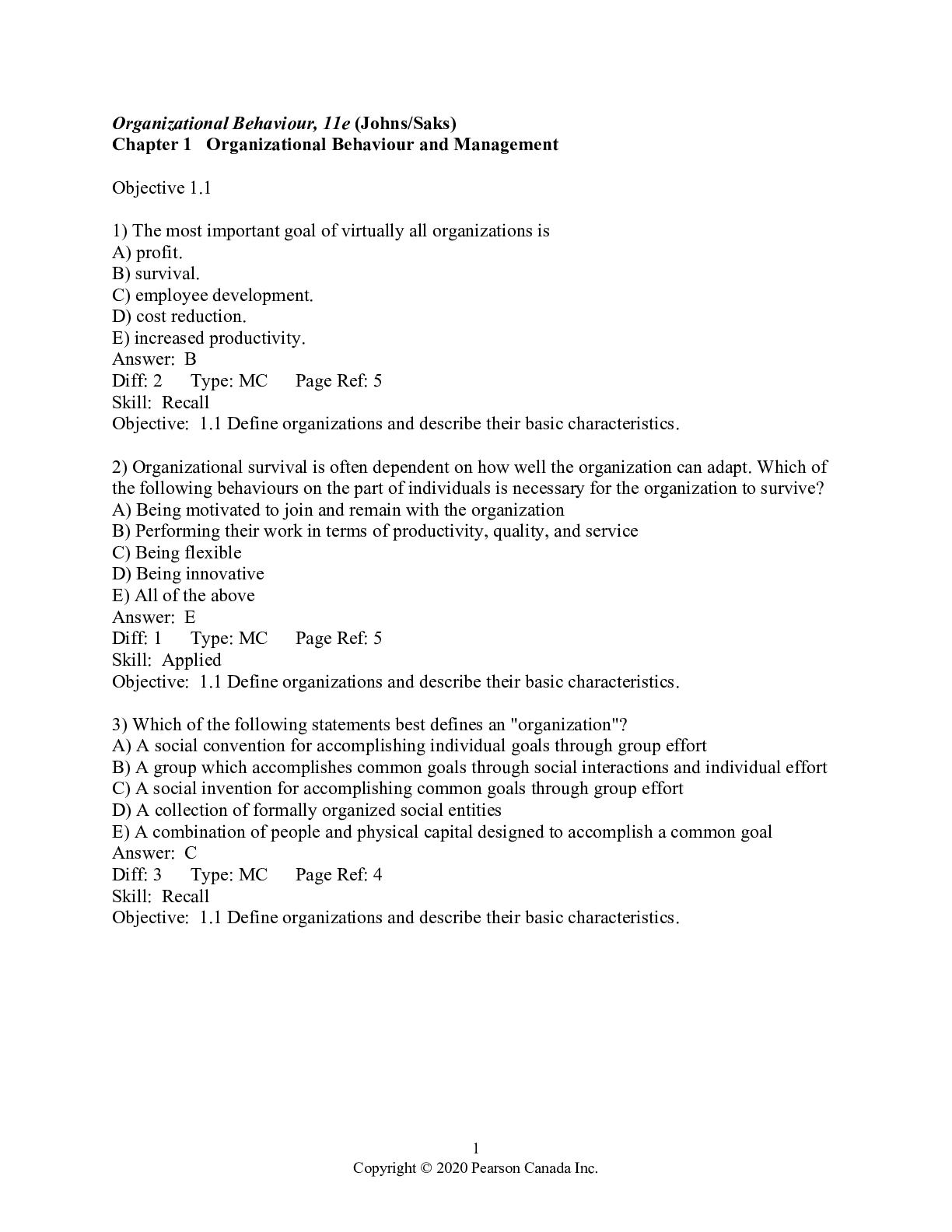
Instant download
Reviews( 0 )
Document information
Connected school, study & course
About the document
Uploaded On
Nov 04, 2022
Number of pages
1078
Written in
Additional information
This document has been written for:
Uploaded
Nov 04, 2022
Downloads
0
Views
263


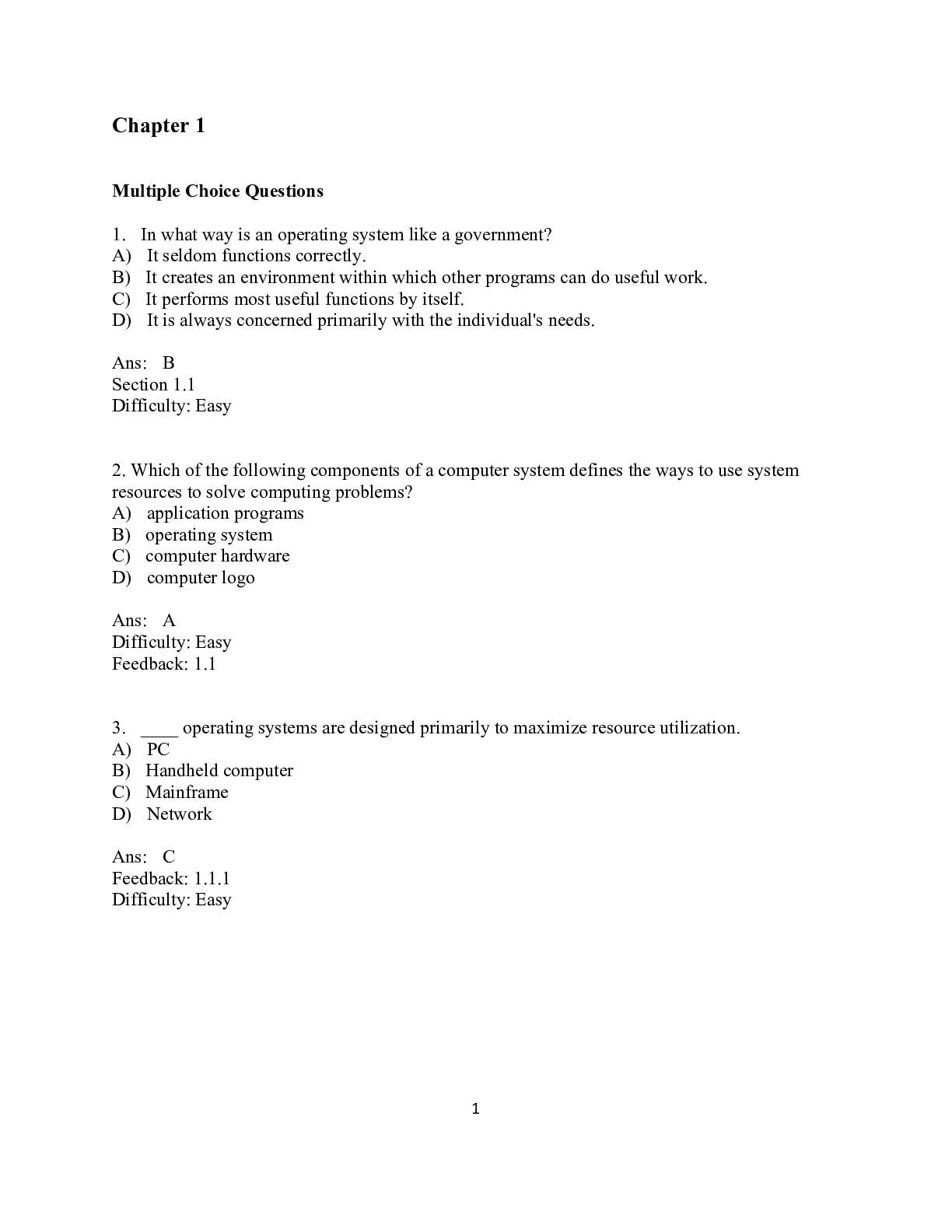






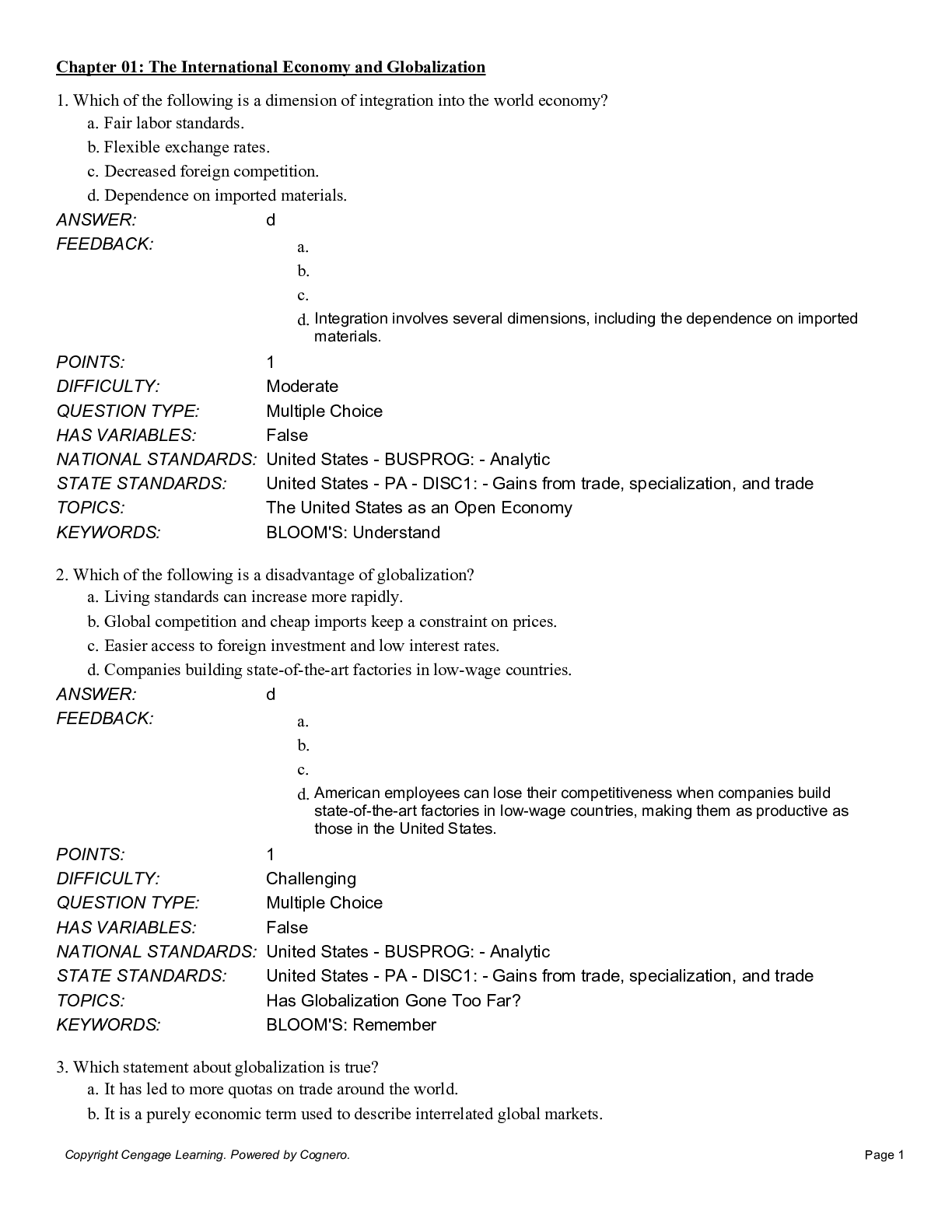
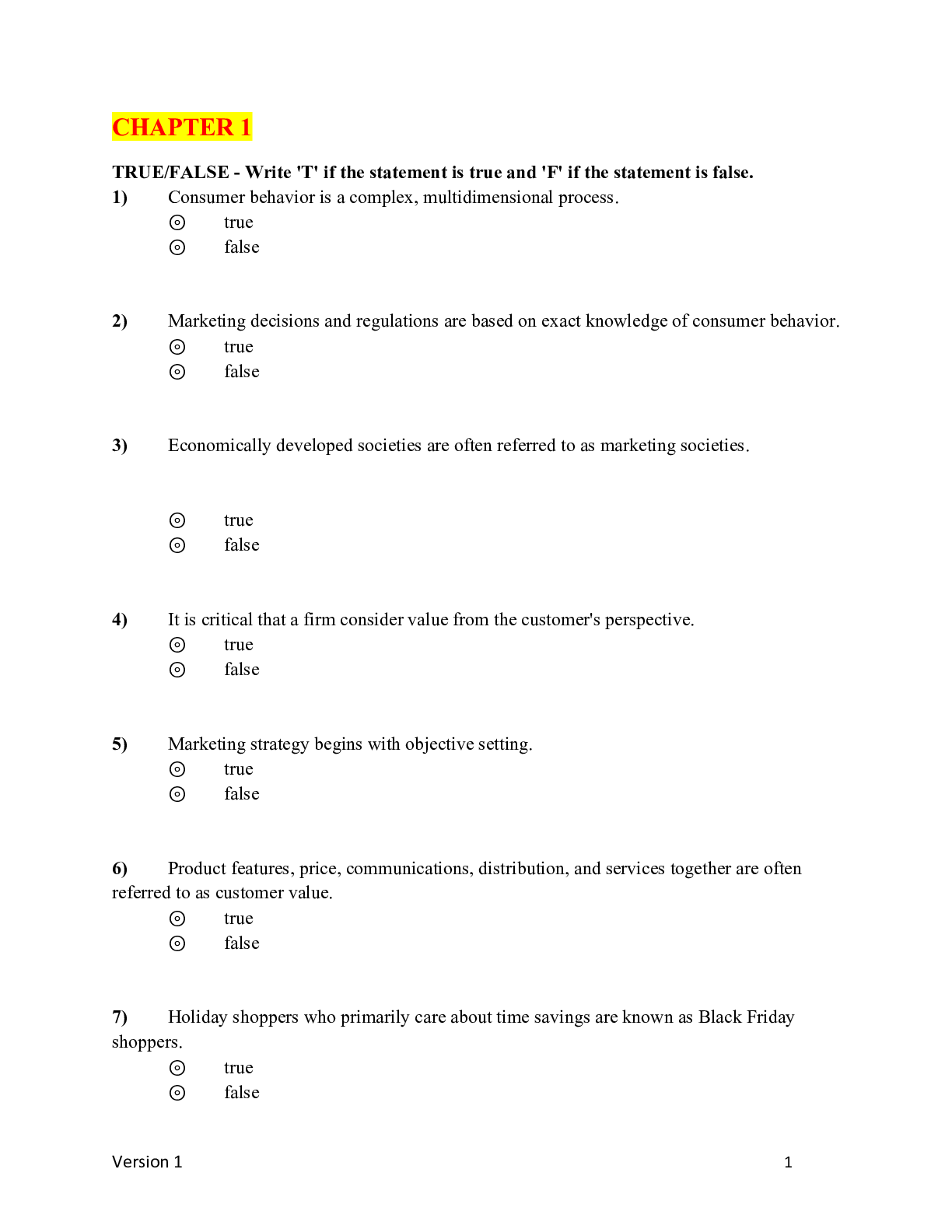
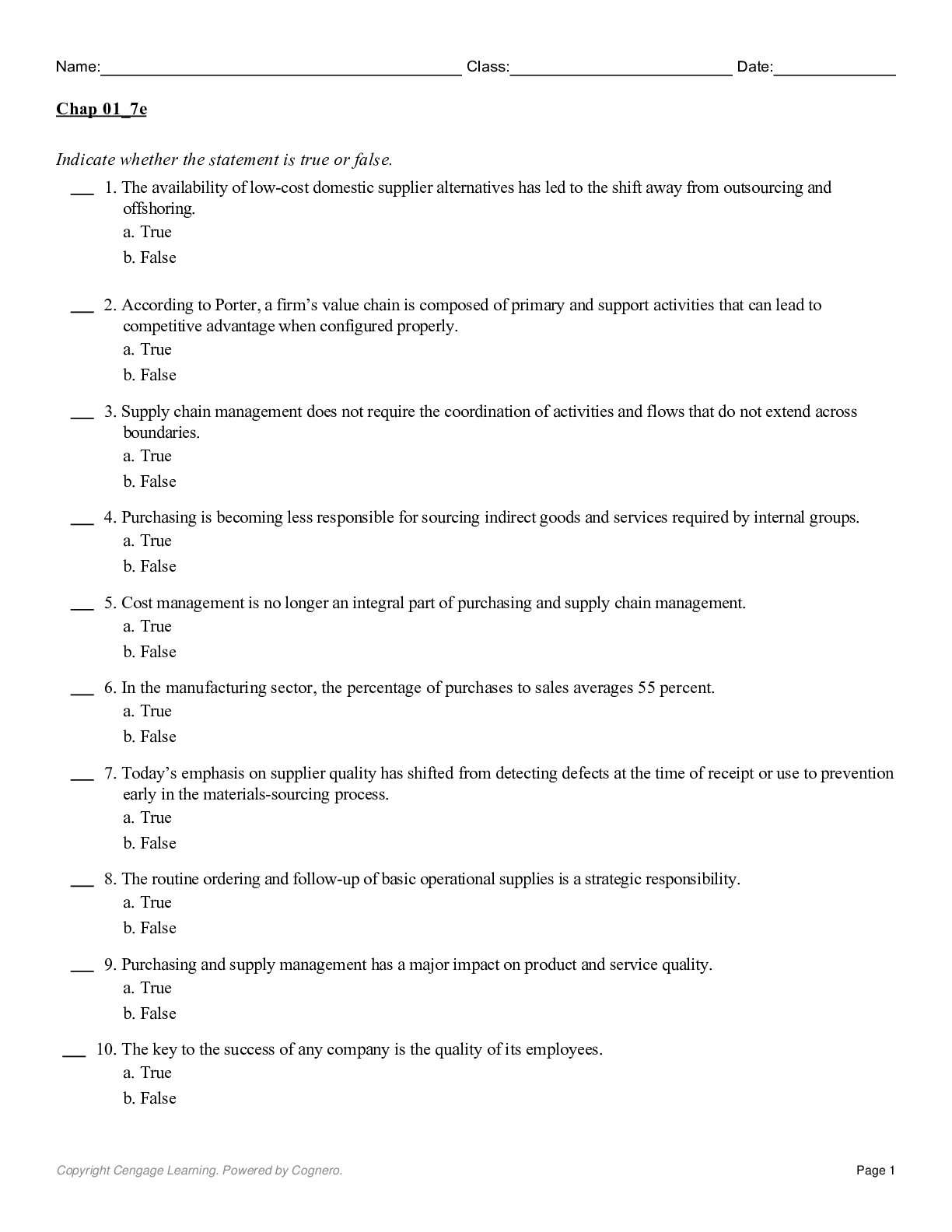
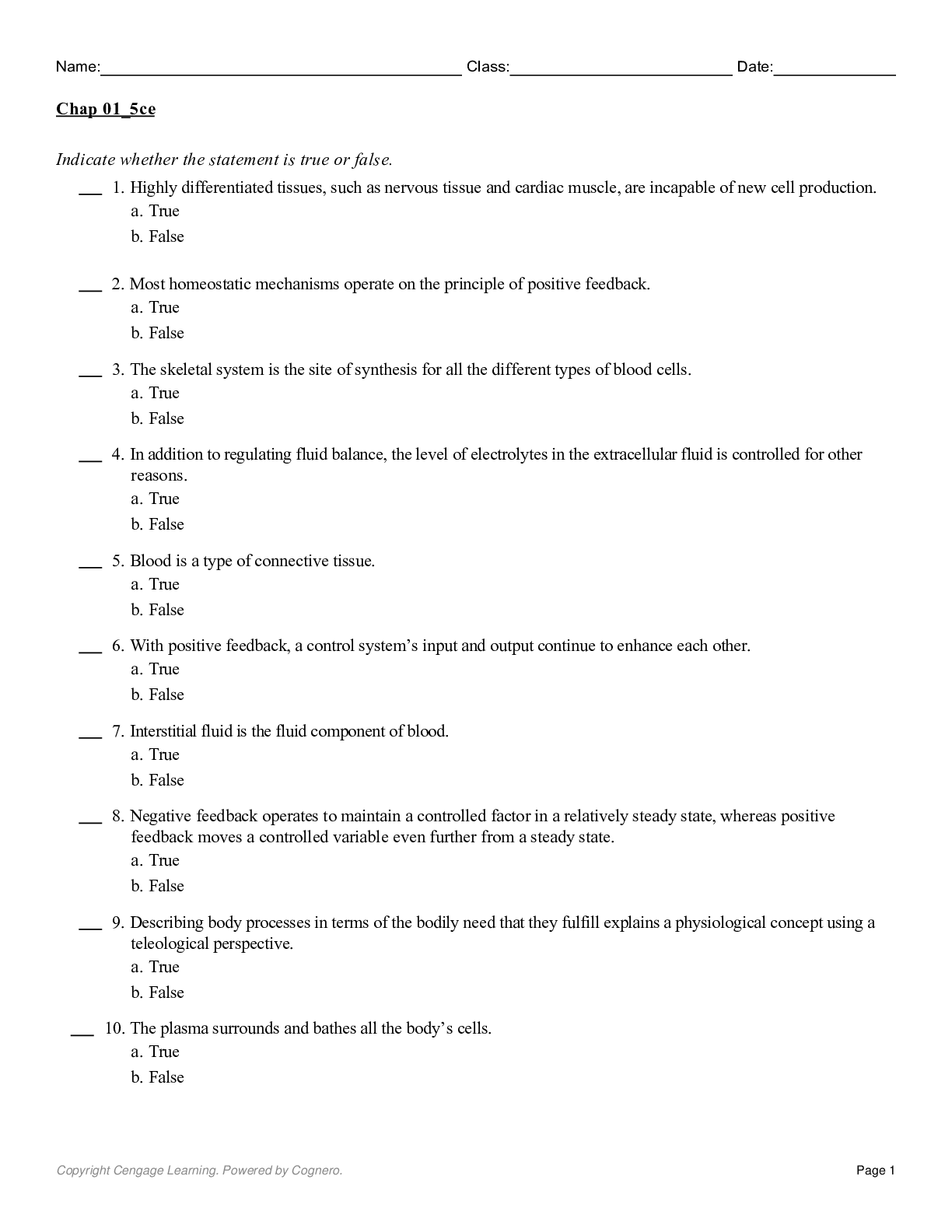
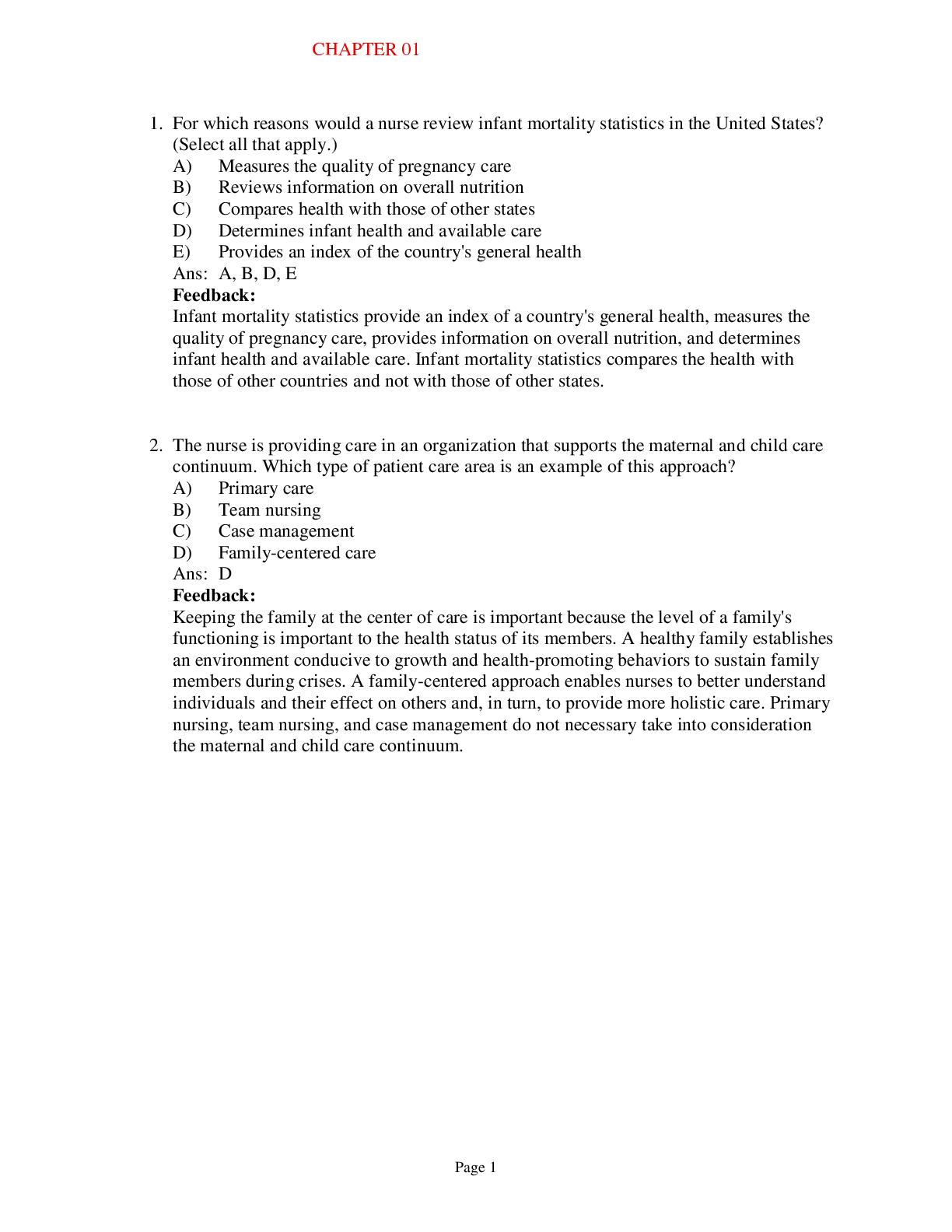
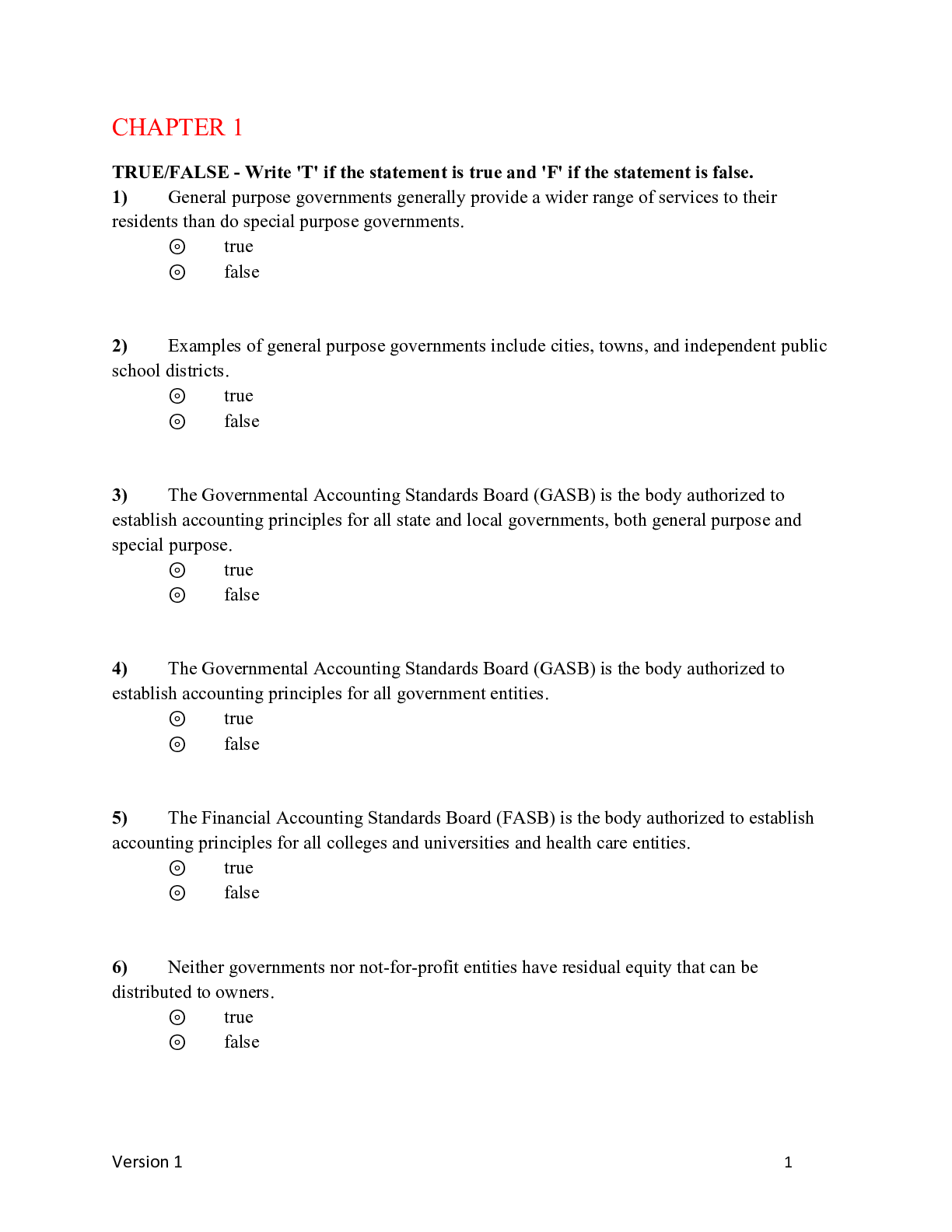
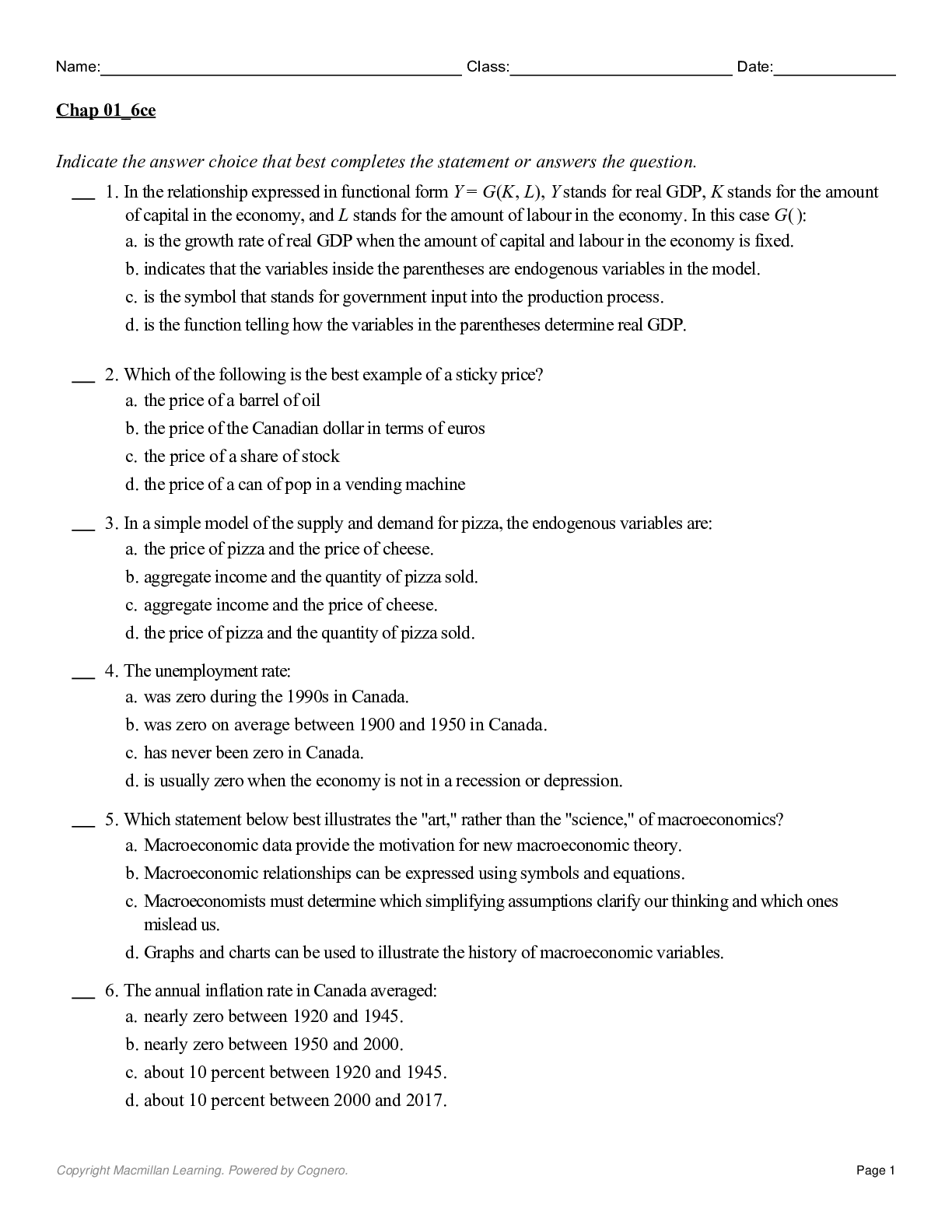
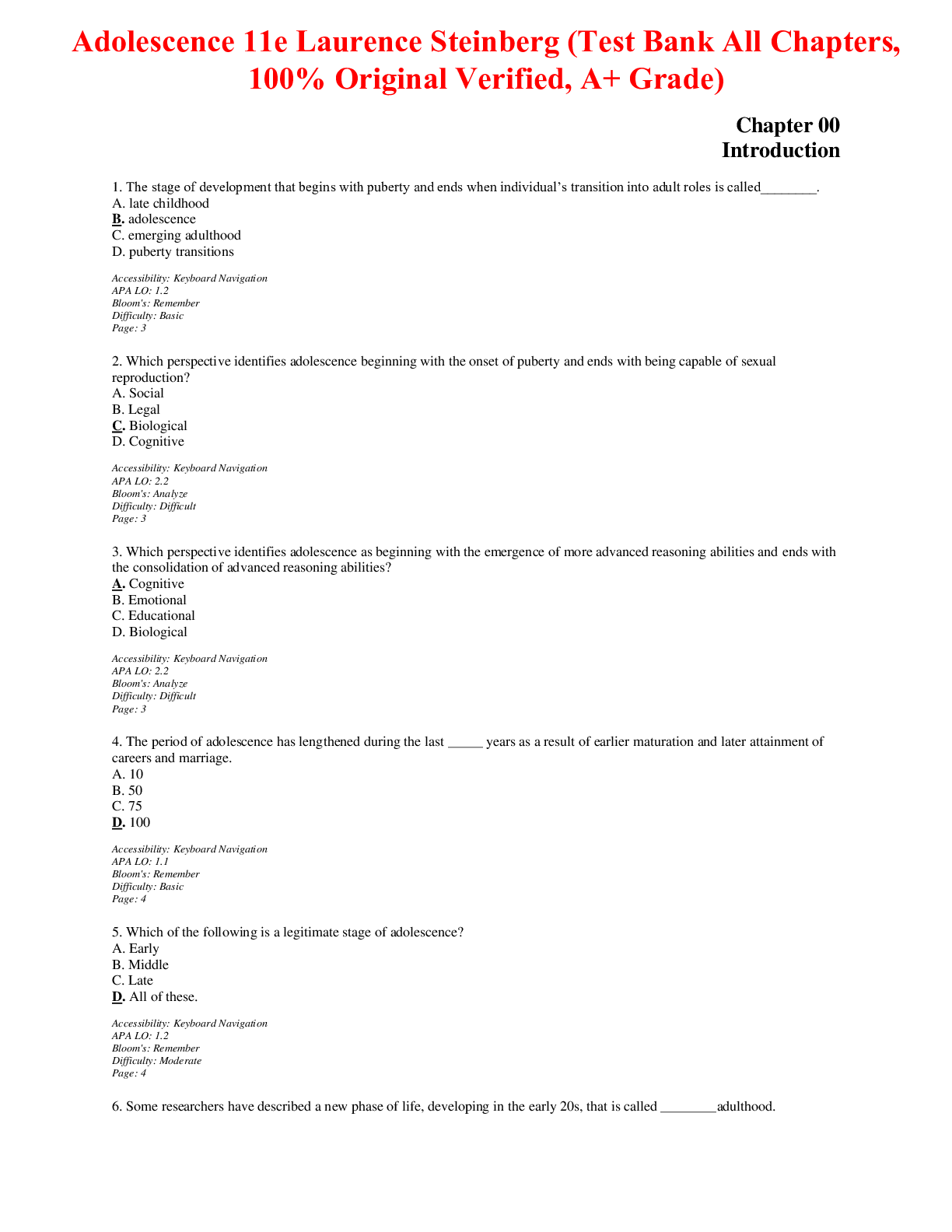



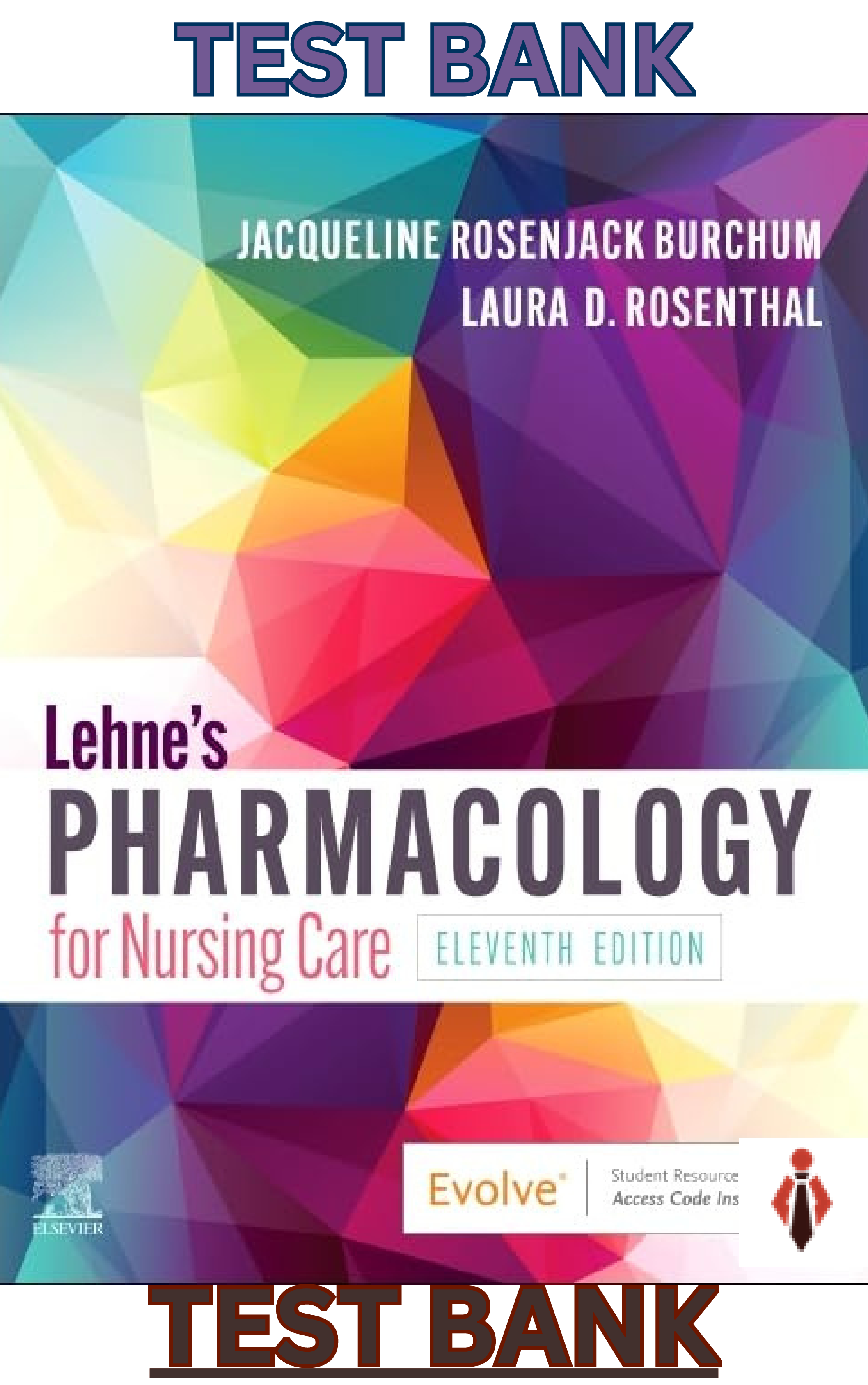
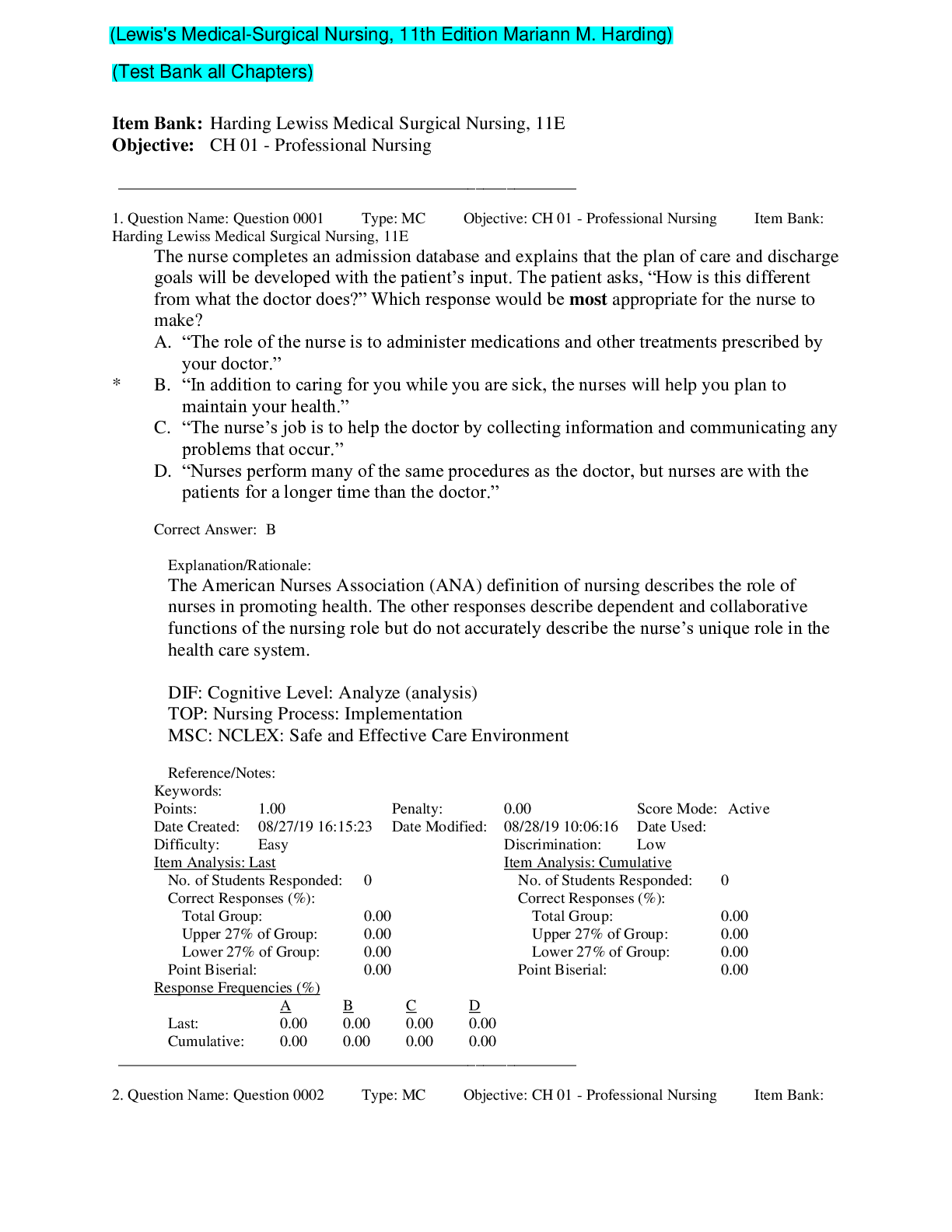
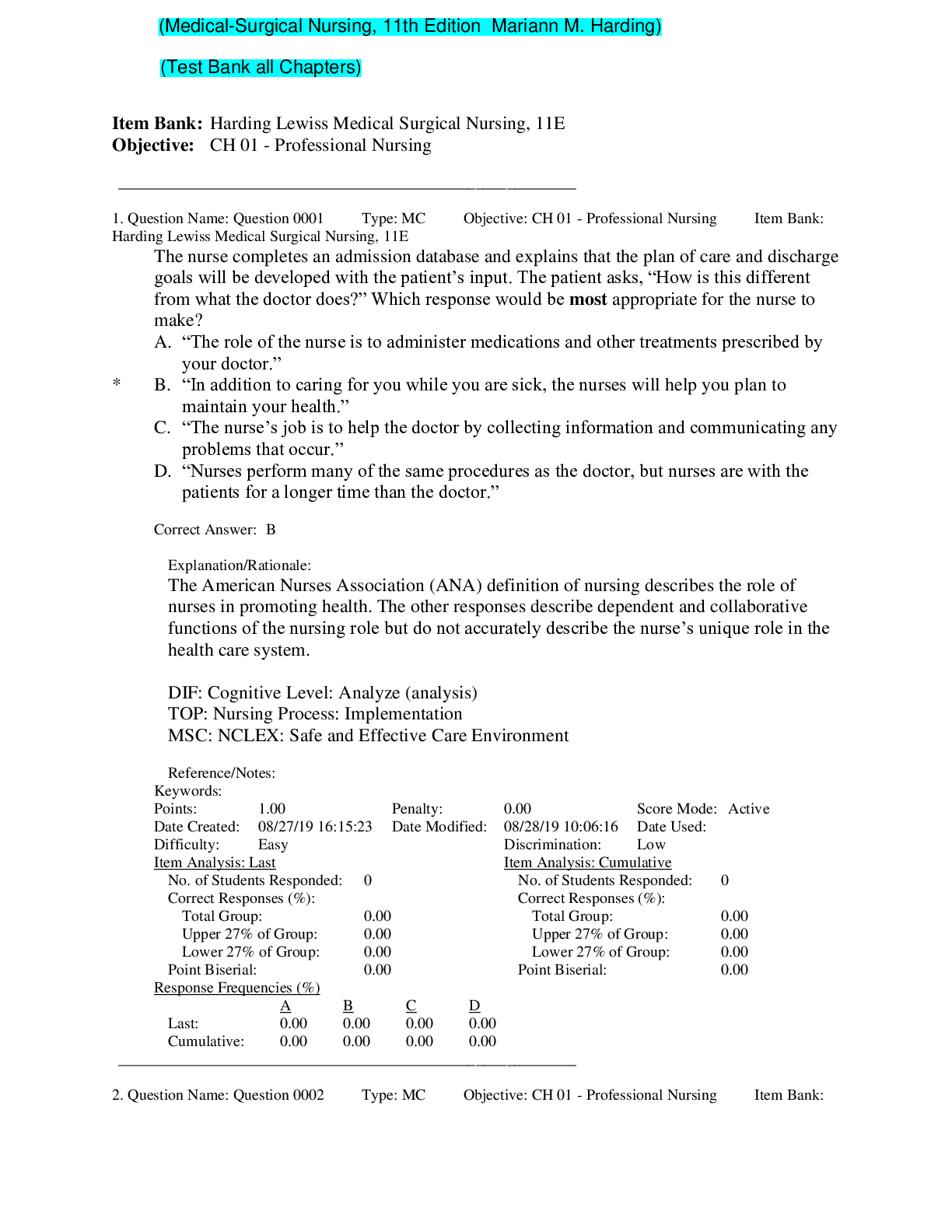
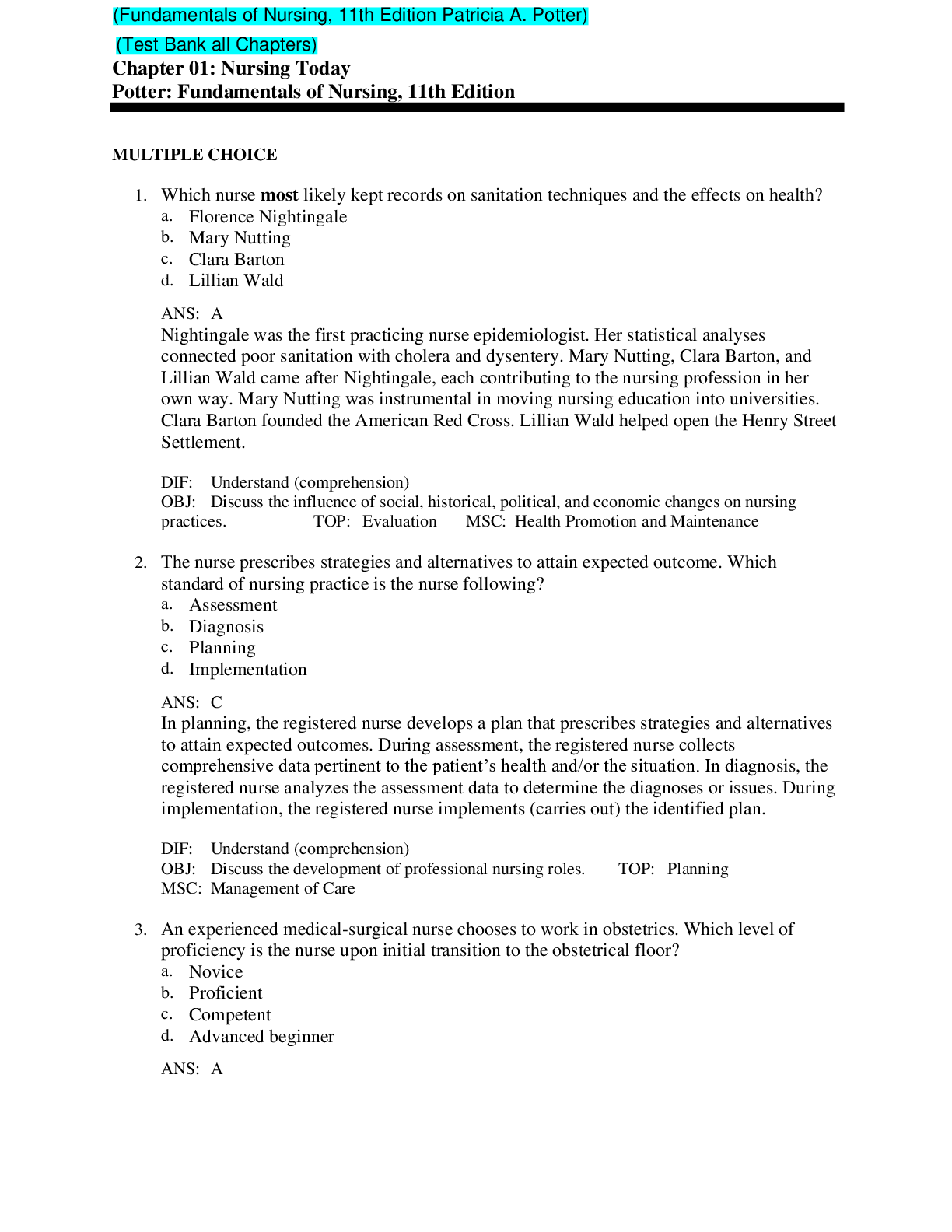
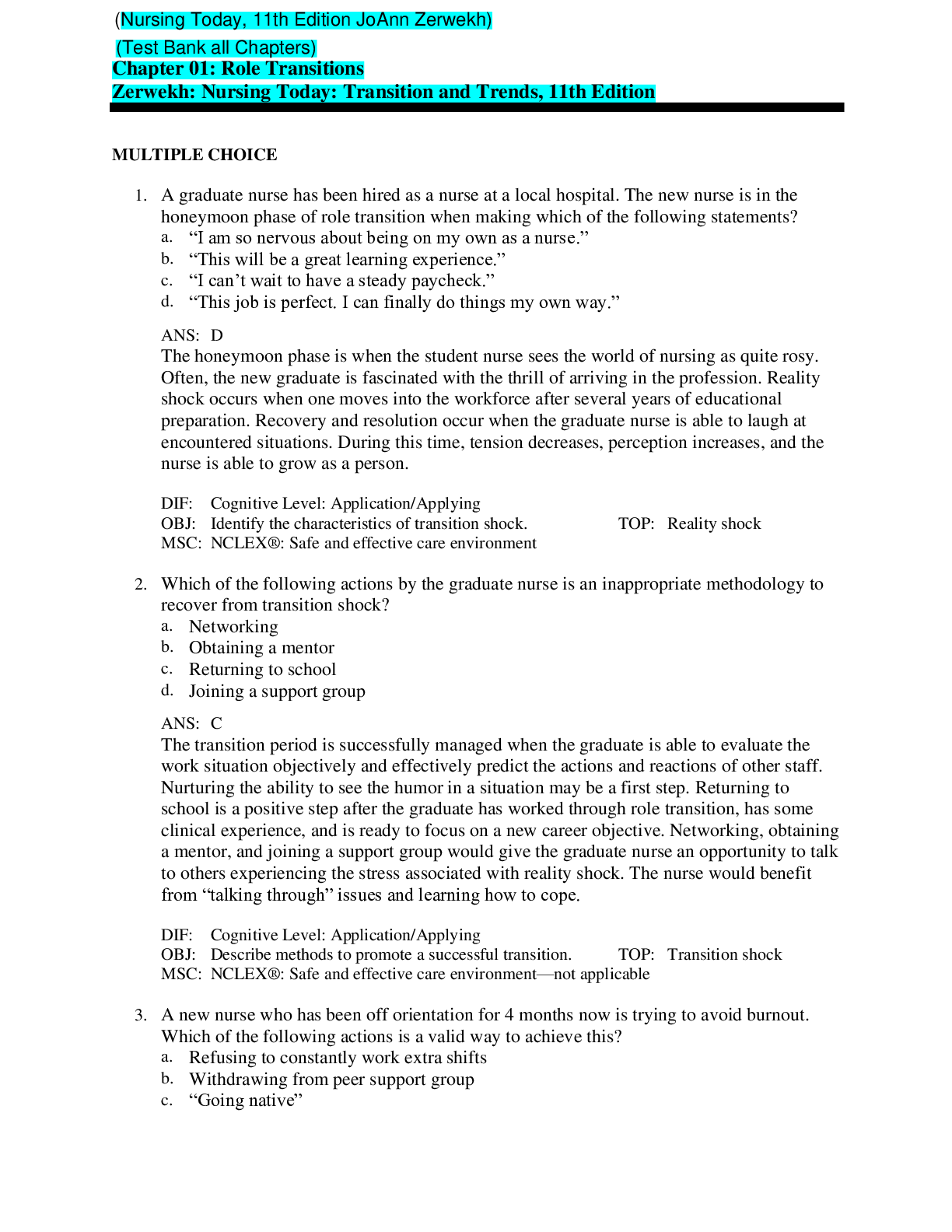
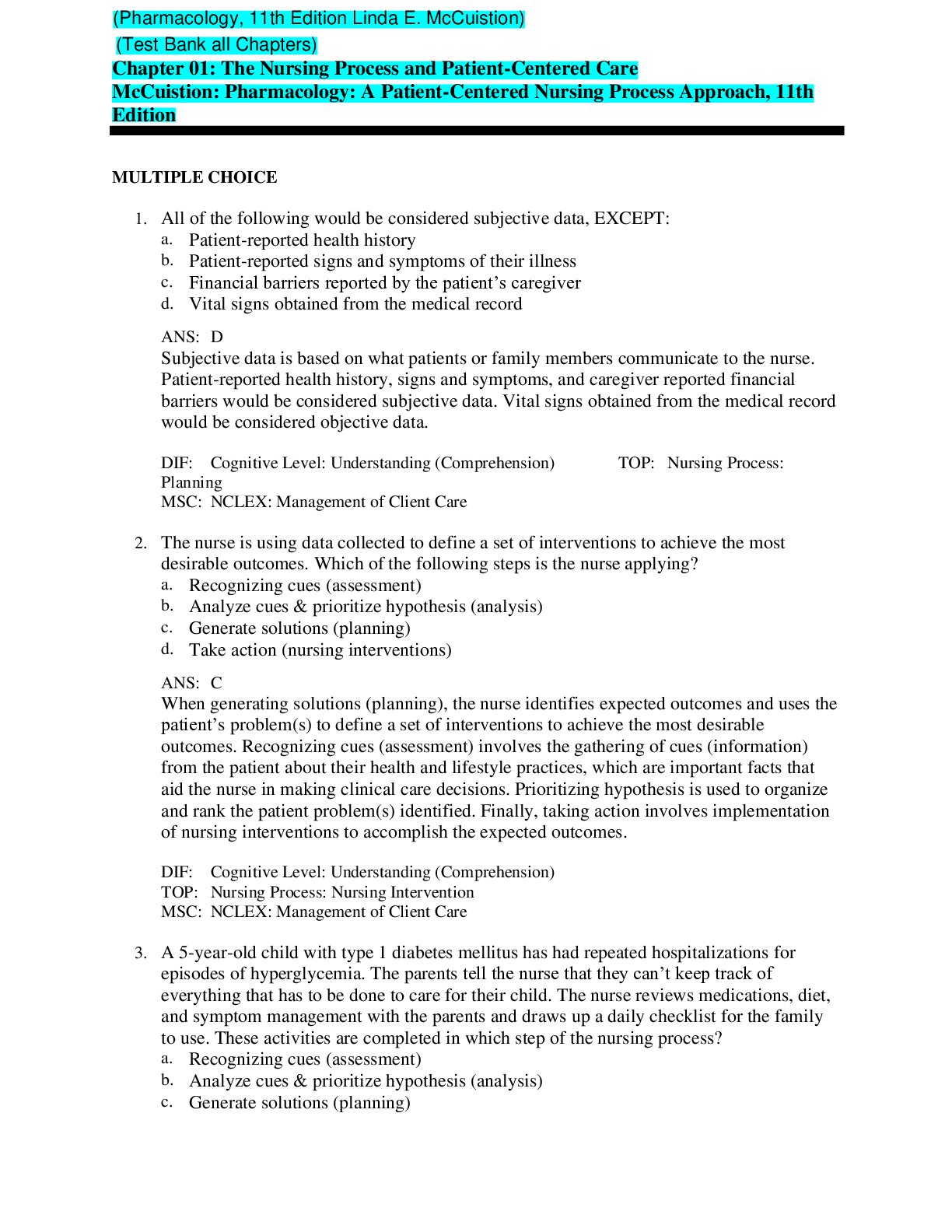
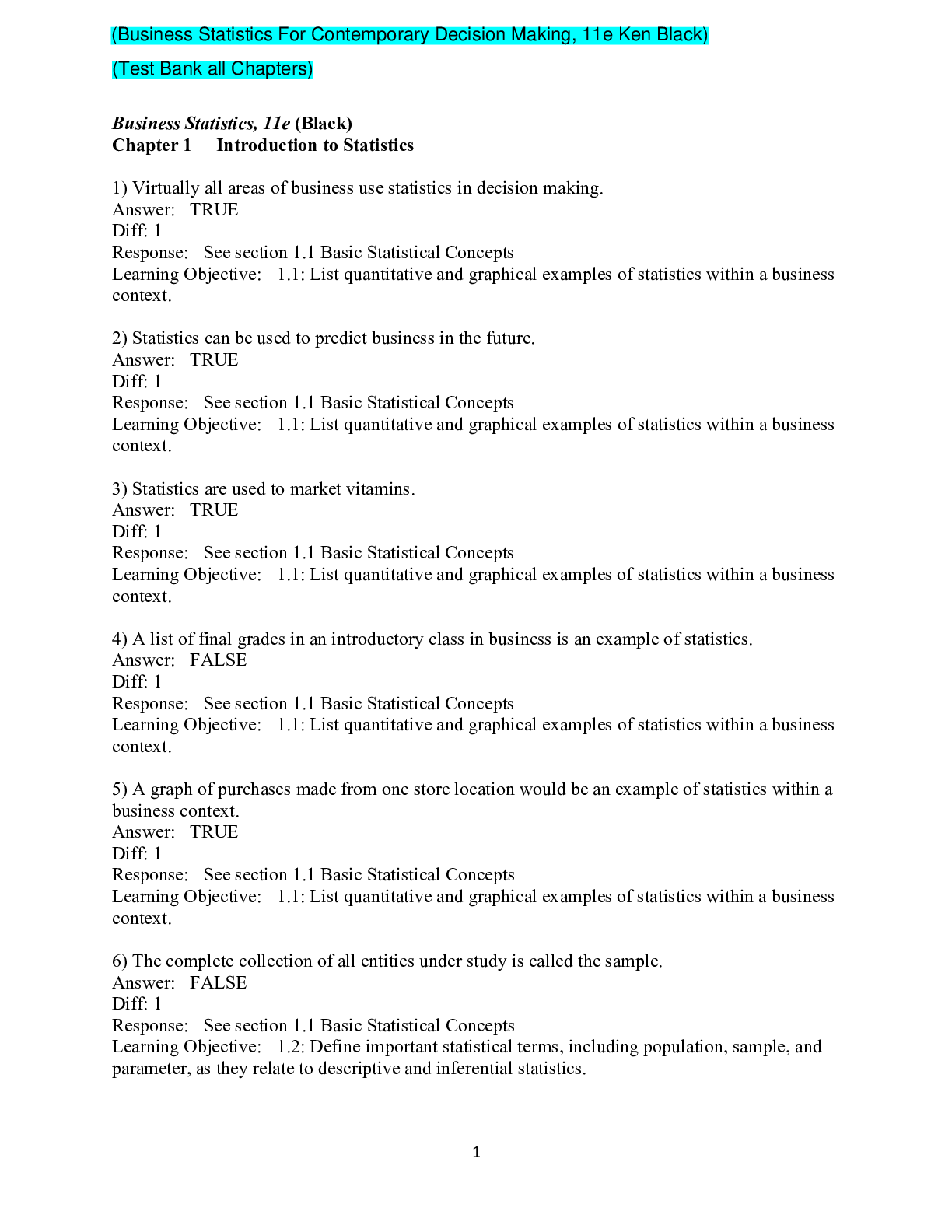
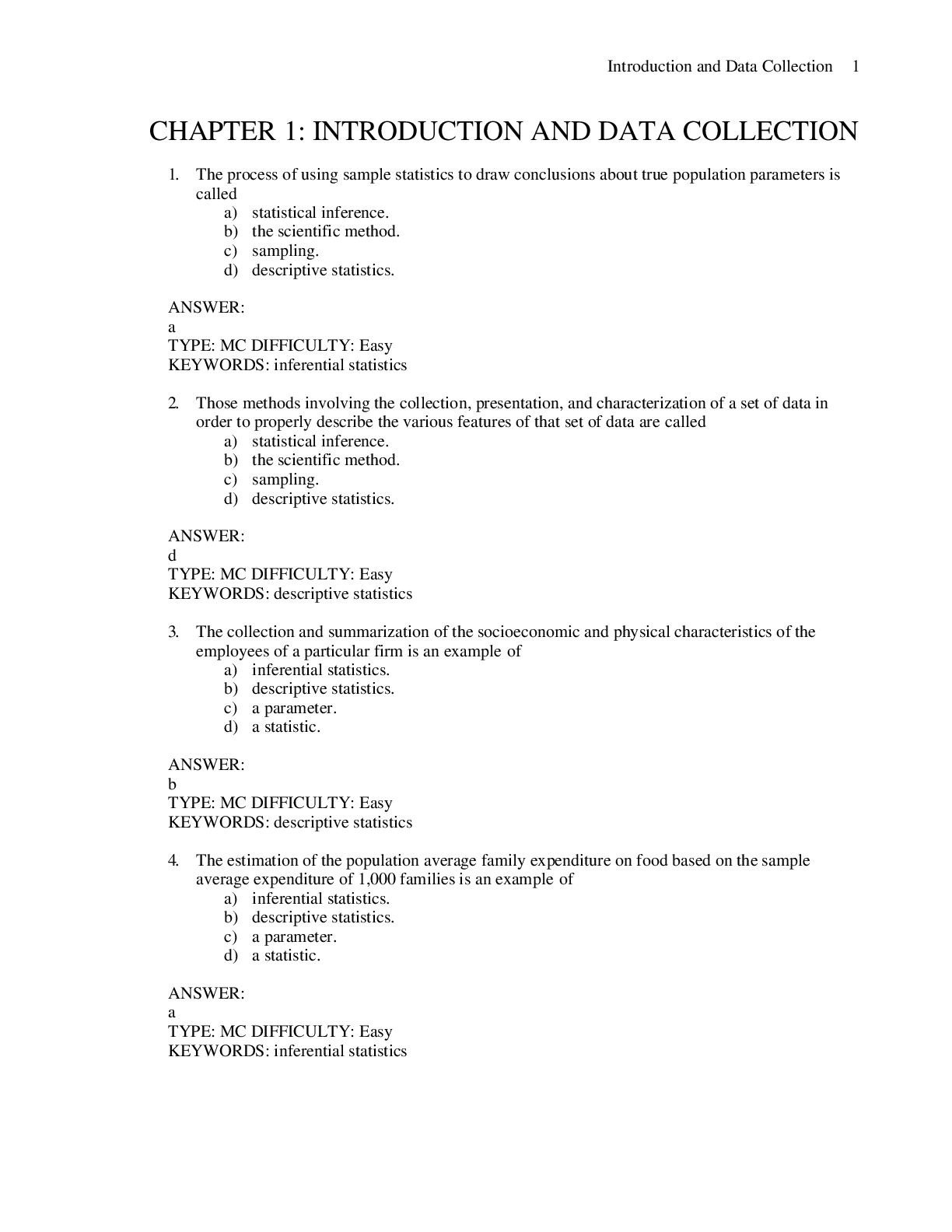


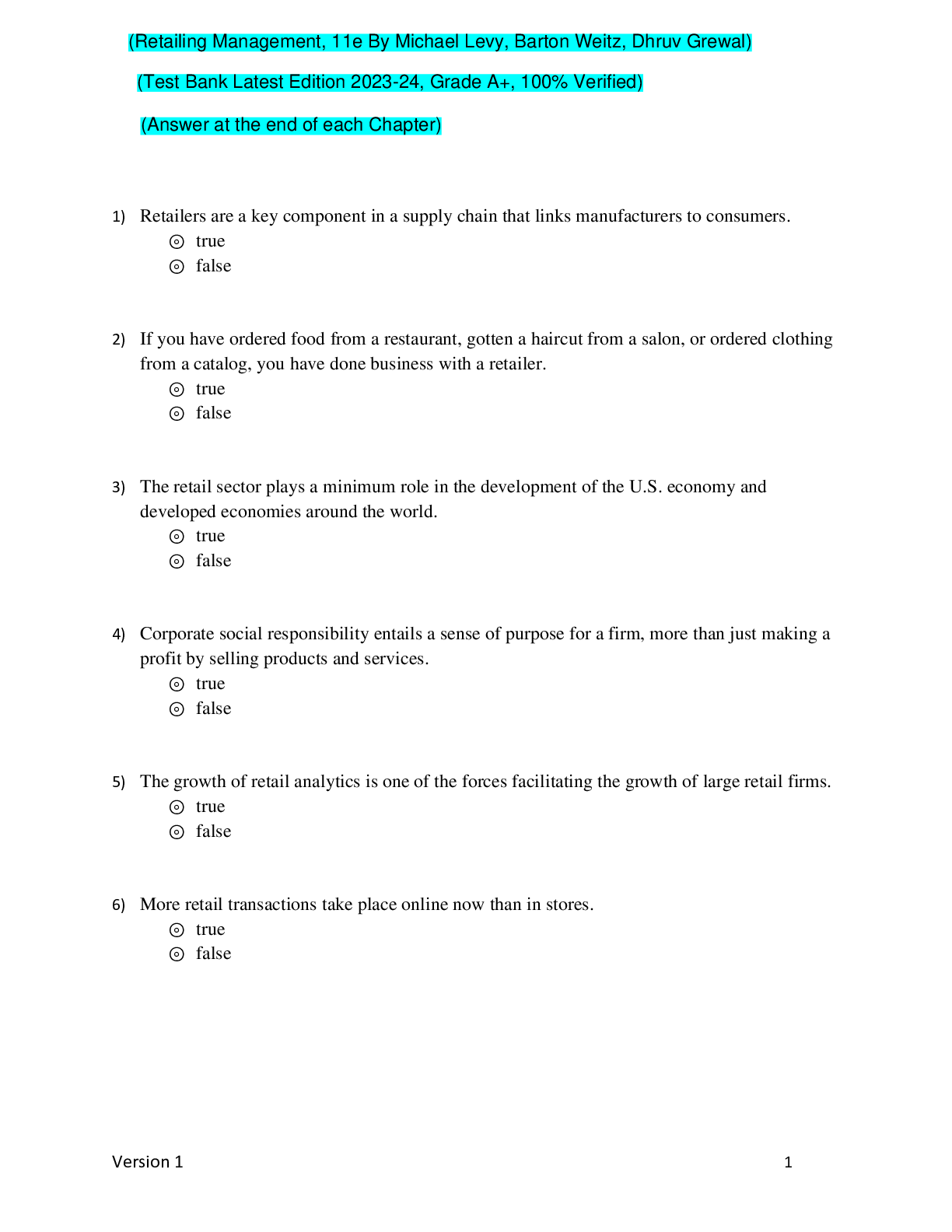

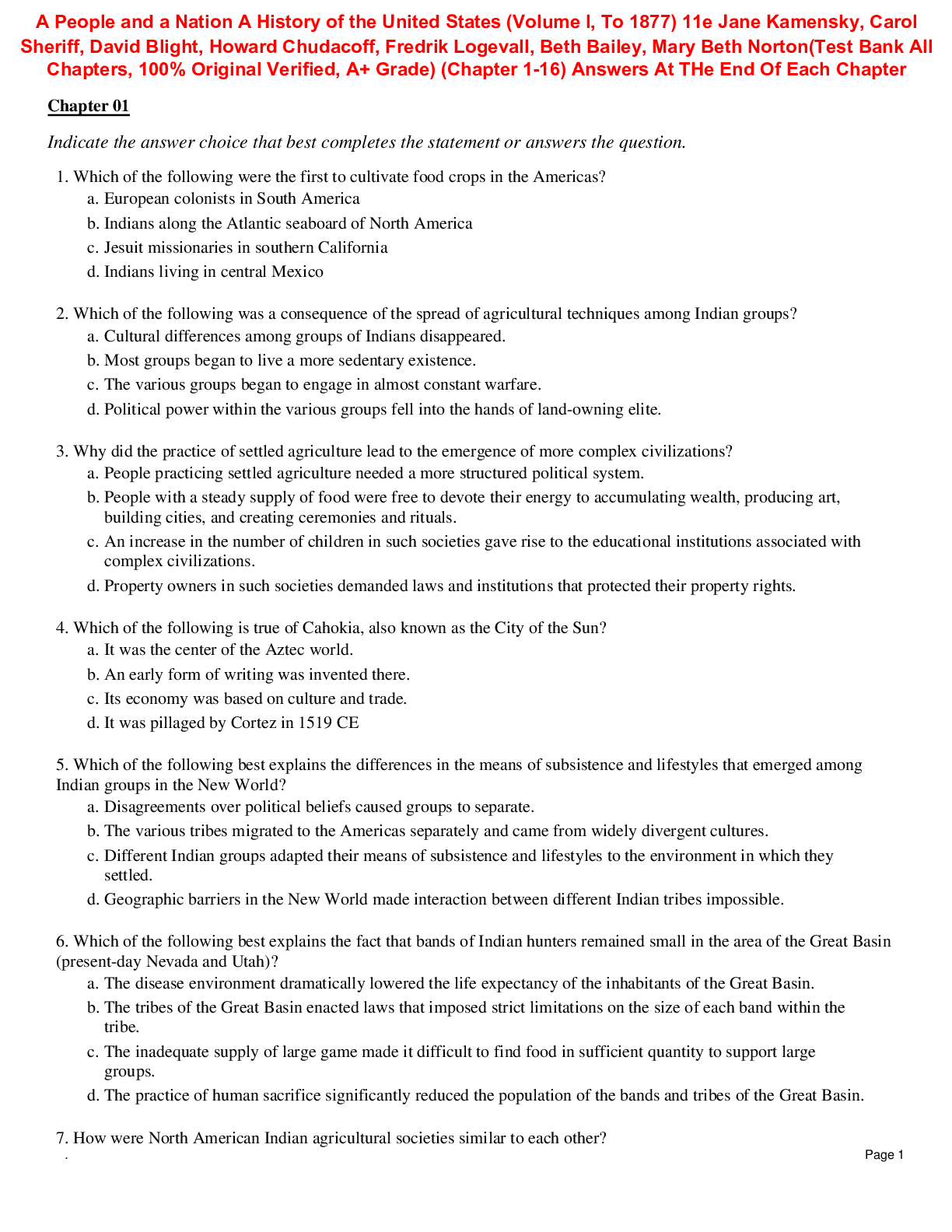
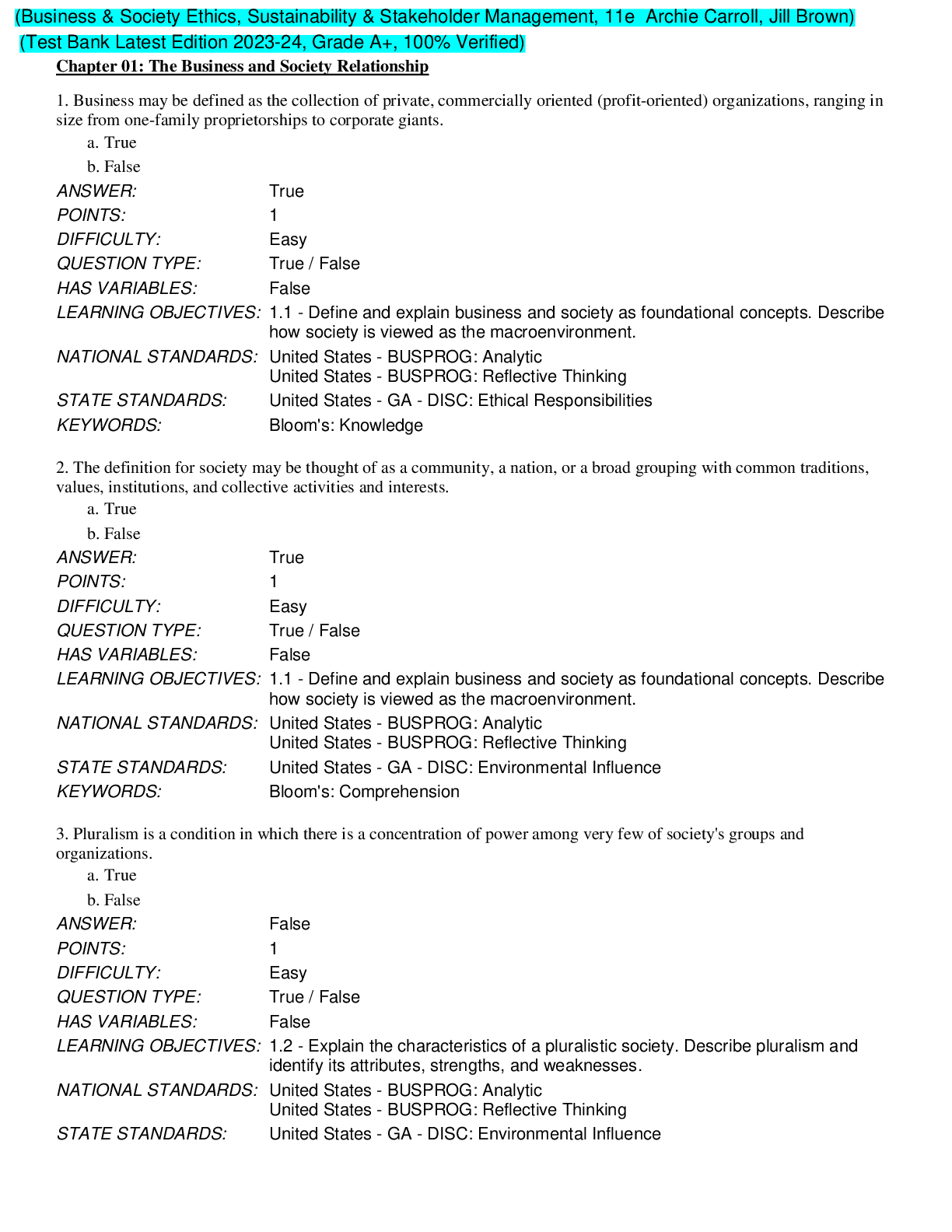
.png)
